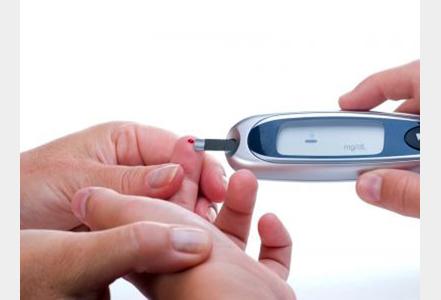3 Ways To Improve Employee Health, Reduce Costs3 Ways To Improve Employee Health, Reduce Costs
Chances are 10% of your employees are generating 70% of your company's healthcare costs. Analytics and partnerships can improve their health and reduce your expenses.


10 Technologies Changing Diabetes Care
10 Technologies Changing Diabetes Care (Click image for larger view and slideshow.)
You've likely heard the old adage, "How do you eat an elephant?" The answer: "One bite at a time." The saying also applies to managing and improving the health of an employee population.
As healthcare costs continue to rise, employers -- especially those offering self-funded plans -- are examining their role and the extent of their involvement in the health of individuals within their company. It's widely known that improved health outcomes ultimately lead to decreased medical costs, and everyone agrees more can be done to move the needle. But the question I hear most from employers is, "How can I actually accomplish this?"
Access to data is just one important element of the equation. Data is only good if it's used to identify risk and manage and measure initiatives meant to improve the health of a defined population, down to the individual person level.
Drilling down and focusing on the individual is critical. While each organization is unique, when taking steps to improve employee health the following three strategies are consistently successful.
1. Focus on the 10%
Typically, between 5% and 10% of any given population spends 70% to 80% of healthcare dollars. Often, one or more chronic diseases affect this segment, putting them at high risk for developing other conditions, increasing the likelihood they're seeing multiple doctors and taking (or perhaps not taking) prescribed medications.
[Should cost reduction be your primary goal? See IT-Enhanced Care Coordination Really Works.]
Many corporate wellness programs focus on an entire employee population, and the people who participate are not the ones responsible for spending most of the company's healthcare dollars. Employers expect big results by engaging all, but identifying and supporting the high-risk, high-cost group of employees is most imperative and will reap the biggest returns. Using analytics technology that focuses on multiple risk factors including behaviors, you can identify the group currently spending the most dollars, as well as the individuals predicted to become high risk and high cost. Simply looking at financial characteristics will not be enough.
2. Designate a liaison
Nurse navigators can serve as single points of contact to guide the health needs of employees and their families. Dedicated to assisting individuals in understanding the intricacies of their healthcare-related needs, establishing an onsite nursing contact allows for the creation of a trusted relationship. Navigators increase engagement because they coach and counsel, having true-to-life conversations tailoring everything they do for each individual to meet specific needs.
Engagement through nurse navigators can have a significant impact on the bottom line. For one employer, nurse navigation with its high-risk employees (which was voluntary for employees) reduced an historical 40% year-over-year increase in medical costs to an 8% decrease for high-risk, high-cost employees and dependents. Without nurse navigation, that upward trend would have continued. Nurse navigators find these participants through detailed analytics relative to diagnosis, cost, and behavior and can manage and track them via real-time portals. Look for a platform that combines individual analysis with the ability to customize, update, and track each individual's program and progress from beginning to end. Patients can connect via portals or apps that make it easy for the individual to keep track of progress, and nurse navigators can connect face-to-face, through a visual system such as FaceTime or sometimes on the phone. Personal contact is a key element for success.
Navigators also streamline processes and improve efficiency. By managing health risk, they also handle an employer's financial risk. With the right data at their fingertips, they can see not only diagnoses but also behaviors -- how many doctors a person sees and the prescriptions they fill, including any that might cause dangerous drug interactions. This information gives navigators a better picture of what is happening, and they can have face-to-face conversations about what is occurring. It's not uncommon for a high-risk employee with multiple chronic conditions to have 15 unique providers and nine or more unique prescribing doctors, or to use three different pharmacies. With approval, they can reach out to doctors to address gaps in care, or at minimum supply reports to employees to share with their doctors at their next visits.
3. Set expectations and establish good partnerships
Employers are increasingly interested in being involved with a provider that can help manage care for their employees and dependents based on evidence-based analytics. Providers are a great resource for nurse navigation -- clinical care is what they do best -- and what has worked well is approaching those providers with a set of expectations related to how costs can be managed and specific targets for health outcomes.
With the right relationships, expectations, and data, everyone wins. Employers can manage risk and save money by reducing medical and pharmacy costs. Employees are healthier and get the personal support they need in managing their healthcare, which can be overwhelming, especially for those with multiple chronic conditions like diabetes, asthma, or congestive heart failure. Physicians like it because they get information they're not able to see anywhere else. Hospitals and health systems get to build relationships with individual patients, provide a valuable service for the employer, and ultimately grow their volumes and market share.
Network Computing's new Must Reads is a compendium of our best recent coverage of data backup and protection. Learn what you should consider before choosing a cloud backup service, why you must reduce your data footprint if you're going to protect data, and more. Get the new Data Backup & Protection issue of Network Computing Must Reads today. (Free registration required.)
Read more about:
2014About the Author
You May Also Like






